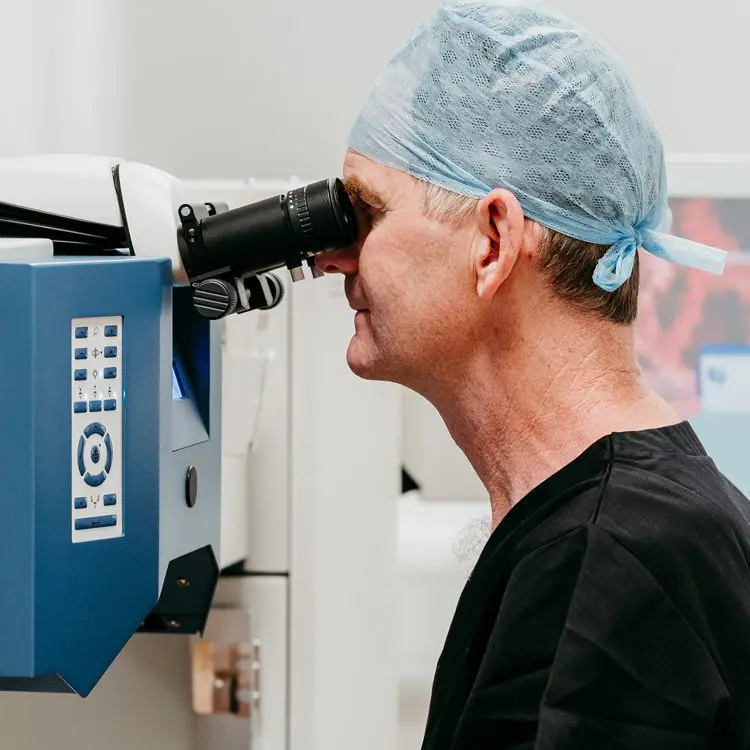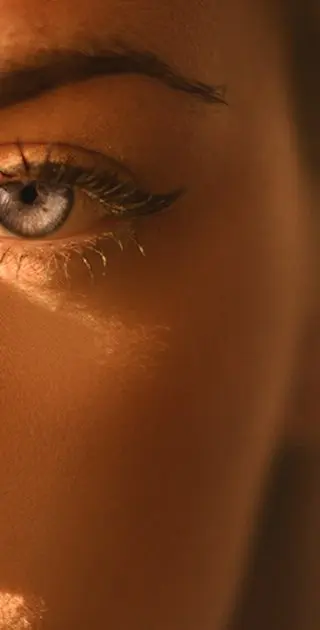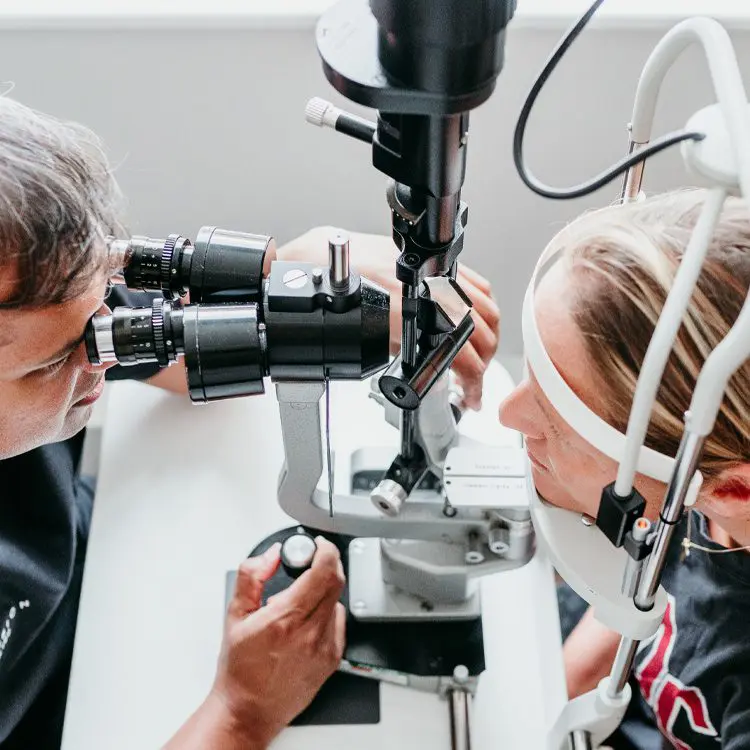




Vitreomacular traction (VMT) occurs when the posterior chamber of the eye is filled with a clear gel-like substance called vitreous. In the healthy, young eye, this gel is firmly attached to the retina and the macula. But, as the eye ages (or secondary to eye disease) the vitreous liquefies, shrinks, and pulls away from the retina. Over time, it separates completely from the retina: a process called a posterior vitreous detachment (PVD) which is a normal part of ageing and usually happens by the age of 70yrs.
In some patients, the vitreous doesn’t detach completely and part of it remains stuck to the macula, at the centre of the retina. The vitreous pulls and tugs on the macula, causing vitreomacular traction (VMT). This can damage the macula and cause vision loss if left untreated.

What are the Symptoms?
What are the Causes?
VMT eye is usually caused by part of the vitreous remaining stuck to the macula during a posterior vitreous detachment. People with certain eye diseases may be at a higher risk of VMT eye symptoms, including those with: high myopia (extreme short-sightedness), age-related macular degeneration (AMD – a breakdown of tissues in the back of the eye), diabetic eye disease (disease that affects the blood vessels in the back of the eye) and retinal vein occlusion (a blockage of veins in the retina).



What is the Diagnosis?
Some cases of VMT may spontaneously resolve. For patients whose symptoms are severe enough to require intervention, pars plana vitrectomy surgery is one treatment option. This VMT eye surgery procedure involves the manual release of vitreous attachment and alleviation of traction. This is combined with peeling of any epiretinal membrane.
Intravitreal injection of Ocriplasmin, which induces enzymatic release of the vitreous from the retina / macula, is a vmt eye treatment that may be recommended instead of surgery. This technique has been approved by NICE for patients with VMT with no epiretinal membrane and a macular hole of ≤400μm horizontal width and/or severe visual symptoms. It has a lower success rate, in terms of hole closure, than surgery (around 34%) but can produce a significant improvement in vision.


Treatment Options
Choosing the right vision correction clinic for your surgery is paramount. This is a life changing procedure after all, and you need to have complete trust in your surgeon and care team of professionals.
Our Technology
We invest in the latest equipment hand chosen by our surgeons, so that we can deliver outstanding results with the safest surgery possible.